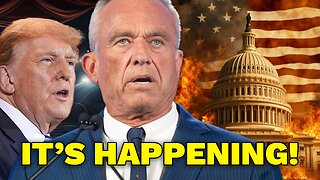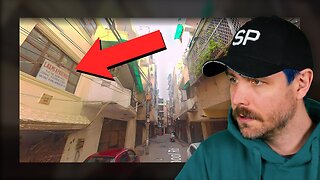Tinted Windows and Tensions: A Closer Look at a Traffic Stop Gone Wrong
Title: Tinted Windows and Tensions: A Closer Look at a Traffic Stop Gone Wrong
Traffic stops are a common occurrence in the daily life of law enforcement officers, designed to uphold public safety and enforce traffic regulations. While most stops end without incident, there are times when such encounters can quickly escalate, raising concerns about the use of force and civil liberties. In this article, we explore an alarming incident in which multiple police officers pulled a man over for tinted windows, leading to a disturbing moment when an officer held a gun to the man's head after he began asking questions. This incident highlights the importance of proper training, de-escalation techniques, and the need for transparency and accountability in policing.
The Routine Traffic Stop
Traffic stops are essential for maintaining order on our roadways. They serve as a means to address potential violations of traffic laws, ensuring that drivers are adhering to regulations meant to protect public safety. Tinted windows are a common reason for traffic stops, as laws regarding window tint vary from place to place.
Tinted Windows and Police Conduct
In the case at hand, a seemingly routine traffic stop took a dramatic turn when a driver was pulled over for having excessively tinted windows, a minor traffic violation in the eyes of many. However, what should have been a straightforward stop quickly transformed into a situation fraught with tension and potential danger.
As the driver asked questions about the reason for the stop and the officers' actions, an officer allegedly escalated the situation by holding a gun to the man's head. Such actions raise several critical issues that deserve examination and discussion:
1. **Use of Force:** The use of a firearm during a traffic stop, particularly for a minor infraction like tinted windows, is highly concerning. Officers are trained to use force as a last resort, and the level of force should be proportionate to the situation at hand.
2. **De-escalation Techniques:** De-escalation is a fundamental aspect of modern policing. Officers are trained to defuse potentially volatile situations and to communicate effectively. It is essential to assess whether de-escalation techniques were utilized and, if not, why not?
3. **Transparency and Accountability:** Maintaining trust between the police and the community is vital. Ensuring transparency in such incidents and holding officers accountable when their actions are in question is a critical step toward building and maintaining public trust.
4. **Civil Liberties:** The right to ask questions during a police encounter is a fundamental civil liberty. Citizens should not fear repercussions for seeking clarification during a stop. This case raises questions about whether the driver's civil liberties were respected.
Conclusion
The incident involving multiple police officers pulling a man over for tinted windows and an officer allegedly holding a gun to the man's head underscores the need for continuous reform and scrutiny within law enforcement agencies. While traffic stops are a necessary tool for maintaining order on the roads, they must be conducted with the utmost professionalism, adherence to the law, and respect for individuals' civil rights. It is crucial to remember that accountability, transparency, and effective communication are cornerstones of a just and fair policing system.
-
 LIVE
LIVE
vivafrei
9 hours agoEp. 229: P Diddy DENIED BAIL! Pool SUES Kamala Harris! Jamie Raskin "DISQUALIFYING" Trump & MORE!
22,031 watching -
 LIVE
LIVE
Nerdrotic
2 hours agoAncient Apocalypse Returns - Atlantis Puzzle Review | Forbidden Frontier #075
3,825 watching -
 LIVE
LIVE
Vigilant News Network
9 hours agoVaccine Horror Shocks the World: Exclusive Update on Alexis Lorenze’s Nightmare Injury - Media Blackout
2,076 watching -
 LIVE
LIVE
Josh Pate's College Football Show
39 minutes agoTennessee Silences OU | Michigan Beats USC | Hugh Freeze Problem | Early UGA-Alabama Thoughts
125 watching -
 DVR
DVR
Barstool Gambling
7 hours agoDave Portnoy, Big Cat, and Co Sweat Out the Sunday Slate | Barstool Gambling Cave
22.1K4 -
 25:34
25:34
Stephen Gardner
4 hours ago🔥Trump MUST BE KEPT ALIVE at all costs! | Exclusive RFK JR Interview!!
52.9K115 -
 53:31
53:31
Standpoint with Gabe Groisman
11 hours agoEp 50. God is Real! with Academy Award-winning actor John Voight
78.7K50 -
 35:04
35:04
Power Slap
7 days agoPower Slap: Road to the Title - Season 3 Episode 9 - Bring Out That Monster
771K103 -
 15:52
15:52
Scammer Payback
1 month agoScammers Located in this Apartment
129K63 -
 10:41
10:41
Breaking Points
3 days agoARSON, 'FREAK OFFS', LUBE: Diddy Indictment SHOCKING DETAILS
90.7K44